-
 Bitcoin
Bitcoin $118000
-0.23% -
 Ethereum
Ethereum $3651
1.66% -
 XRP
XRP $3.423
-1.58% -
 Tether USDt
Tether USDt $1.001
-0.02% -
 BNB
BNB $742.8
0.69% -
 Solana
Solana $177.8
0.30% -
 USDC
USDC $0.9999
0.01% -
 Dogecoin
Dogecoin $0.2539
0.03% -
 TRON
TRON $0.3199
-1.74% -
 Cardano
Cardano $0.8382
0.59% -
 Hyperliquid
Hyperliquid $44.83
0.05% -
 Stellar
Stellar $0.4602
-1.49% -
 Sui
Sui $3.850
0.58% -
 Chainlink
Chainlink $18.62
2.56% -
 Hedera
Hedera $0.2681
0.97% -
 Avalanche
Avalanche $24.63
3.07% -
 Bitcoin Cash
Bitcoin Cash $522.5
0.96% -
 Shiba Inu
Shiba Inu $0.00001507
-0.80% -
 Litecoin
Litecoin $113.6
9.75% -
 UNUS SED LEO
UNUS SED LEO $8.994
0.24% -
 Toncoin
Toncoin $3.197
-0.43% -
 Polkadot
Polkadot $4.361
1.13% -
 Uniswap
Uniswap $10.45
1.41% -
 Monero
Monero $327.5
0.65% -
 Ethena USDe
Ethena USDe $1.001
-0.03% -
 Bitget Token
Bitget Token $4.992
-1.12% -
 Pepe
Pepe $0.00001355
0.67% -
 Dai
Dai $1.000
0.01% -
 Aave
Aave $322.6
0.15% -
 Bittensor
Bittensor $415.5
0.88%
What is the expense ratio for the Fidelity Bitcoin ETF?
The Fidelity Bitcoin ETF (FBTC) has a proposed expense ratio of 0.39%, making it a competitive option among spot Bitcoin ETFs.
Jul 20, 2025 at 08:35 am
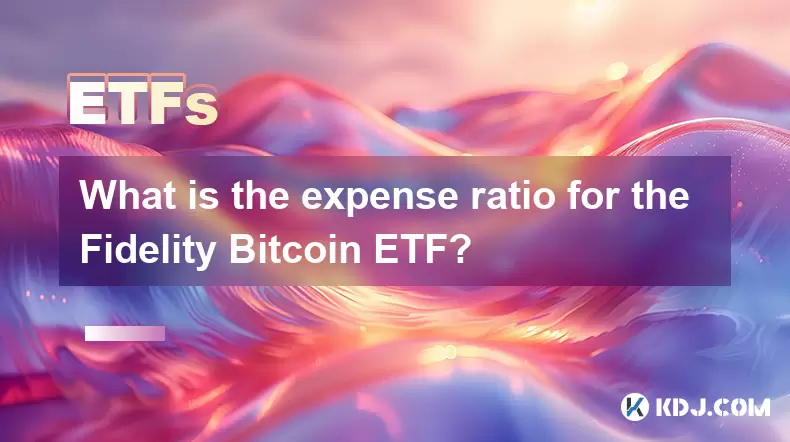
Understanding the Expense Ratio Concept in ETFs
The expense ratio is a key metric for investors evaluating exchange-traded funds (ETFs). It represents the annual fee charged by the fund provider to manage the ETF, expressed as a percentage of the total assets under management. This cost includes administrative fees, operating expenses, and management fees. For example, if an ETF has an expense ratio of 0.50%, an investor with $10,000 invested would pay $50 annually in fees. In the case of the Fidelity Bitcoin ETF, understanding its expense ratio is crucial for assessing how much it costs to hold the fund over time.
Fidelity Bitcoin ETF: Key Details
Fidelity Investments, one of the largest asset managers globally, filed for a spot Bitcoin ETF in late 2023. The proposed Fidelity Wise Origin Bitcoin Trust (FBTC) aims to provide investors with exposure to Bitcoin without the need to directly own or store the cryptocurrency. While the U.S. Securities and Exchange Commission (SEC) had not approved any spot Bitcoin ETFs at the time of writing, Fidelity positioned itself as a serious contender in this space. As part of its offering, the company outlined details regarding the fund’s structure, including its management fees and expense ratios.
Current Expense Ratio for the Fidelity Bitcoin ETF
In its initial filings, Fidelity indicated that the expense ratio for FBTC would be 0.39% annually. This figure places it competitively among other proposed spot Bitcoin ETFs from firms like BlackRock, ARK Invest, and Grayscale. The 0.39% fee covers the fund's operational costs, including custodial services, legal fees, and compliance monitoring. Notably, this rate was set to attract institutional and retail investors alike by balancing cost-efficiency with robust security and transparency measures.
- The expense ratio applies to all shares of the ETF.
- It is deducted daily from the fund’s net asset value (NAV).
- Investors do not pay this fee directly; it is reflected in the ETF’s performance.
How Does the Fidelity Fee Compare?
When compared to other potential entrants in the Bitcoin ETF market, Fidelity’s proposed 0.39% expense ratio appears strategically positioned. BlackRock initially proposed a 0.30% fee for its iShares Bitcoin Trust (IBIT), while Grayscale’s proposed conversion of its GBTC into an ETF included a reduced fee of 0.15%. However, these figures are subject to change depending on regulatory approvals and competitive dynamics. Fidelity’s decision to set its fee slightly above some competitors may reflect its commitment to delivering enhanced service quality, brand trust, and infrastructure reliability.
What Influences the Expense Ratio?
Several factors contribute to the determination of an ETF’s expense ratio, particularly for a crypto-based product like the Fidelity Bitcoin ETF:
- Regulatory compliance costs: Ensuring adherence to SEC guidelines increases operational complexity and cost.
- Custody solutions: Secure storage of Bitcoin adds overhead due to specialized technology and insurance requirements.
- Marketing and distribution: Launching a new ETF involves substantial investment in promotion and broker-dealer partnerships.
- Index licensing: If the ETF follows a specific Bitcoin index or methodology, licensing fees apply.
These components collectively shape the final expense ratio disclosed in the prospectus.
Impact of the Expense Ratio on Investor Returns
While 0.39% might seem modest, even small differences in expense ratios can significantly impact long-term returns. Consider an investment of $10,000 held over ten years with an average annual return of 10%. With no fees, the investment would grow to approximately $25,937. However, with a 0.39% annual expense ratio, the final amount would be around $24,568 — a reduction of about $1,369. Therefore, investors should closely monitor the net returns after fees when considering the Fidelity Bitcoin ETF or any similar product.
FAQs
Q1: Is the Fidelity Bitcoin ETF available for purchase yet?
No, as of early 2024, the Fidelity Bitcoin ETF (FBTC) has not been approved by the SEC. The approval process is ongoing, and several major asset managers have submitted competing applications.
Q2: How does Fidelity charge its expense ratio?
The 0.39% expense ratio is automatically deducted from the fund’s net asset value (NAV) on a daily basis. Investors do not pay this fee separately; it is factored into the ETF’s share price.
Q3: Can the expense ratio change after launch?
Yes, the expense ratio can be adjusted. Fund providers often waive or reduce fees during the early stages to attract assets. Any changes must be disclosed in updated prospectuses and regulatory filings.
Q4: Why is the expense ratio important for Bitcoin ETF investors?
The expense ratio affects overall returns and determines the cost efficiency of holding the ETF. Lower fees generally mean higher net returns for investors, especially over extended periods.
Disclaimer:info@kdj.com
The information provided is not trading advice. kdj.com does not assume any responsibility for any investments made based on the information provided in this article. Cryptocurrencies are highly volatile and it is highly recommended that you invest with caution after thorough research!
If you believe that the content used on this website infringes your copyright, please contact us immediately (info@kdj.com) and we will delete it promptly.
- Crypto Coins, Undervalued Gems & Bull Run Potential: What You Need to Know, New Yorker Style
- 2025-07-20 20:30:12
- Nexchain, Cardano, Litecoin: What's Hot and What's Not in Crypto
- 2025-07-20 20:30:12
- Bitcoin Price Today: Recovery Hopes Amidst Fluctuations?
- 2025-07-20 20:50:12
- CoinDCX Hacked? Investor Safety in the Crypto Crosshairs
- 2025-07-20 20:50:12
- Blockchain Expansion: Global Moves and Market Dynamics in Web3
- 2025-07-20 20:55:13
- Coin Collecting, Steinbach Teen, and the Passion for Knowledge: A Numismatic Journey
- 2025-07-20 18:30:12
Related knowledge

What is the best platform to trade Bitcoin ETFs?
Jul 17,2025 at 03:50pm
Understanding Bitcoin ETFs and Their Role in the MarketBitcoin Exchange-Traded Funds (ETFs) are investment vehicles that track the price of Bitcoin wi...
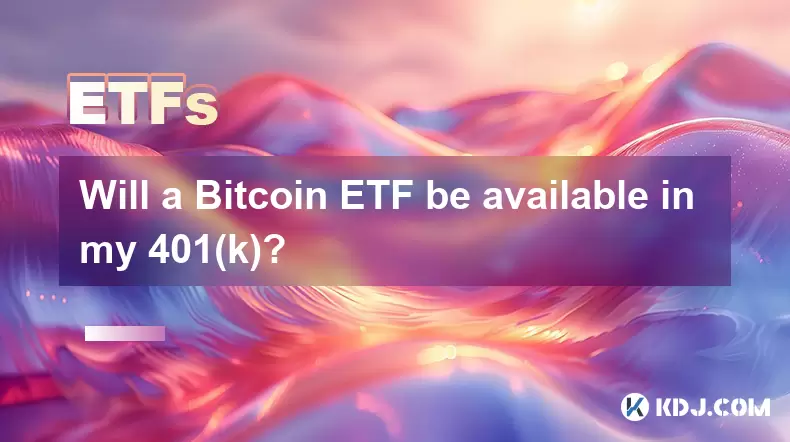
Will a Bitcoin ETF be available in my 401(k)?
Jul 17,2025 at 10:42pm
What is a Bitcoin ETF?A Bitcoin ETF (Exchange-Traded Fund) is an investment vehicle that tracks the price of Bitcoin without requiring investors to di...

Who is the authorized participant for a Bitcoin ETF?
Jul 18,2025 at 12:42am
Understanding the Role of Authorized Participants in Bitcoin ETFsIn the context of Bitcoin Exchange-Traded Funds (ETFs), an authorized participant (AP...
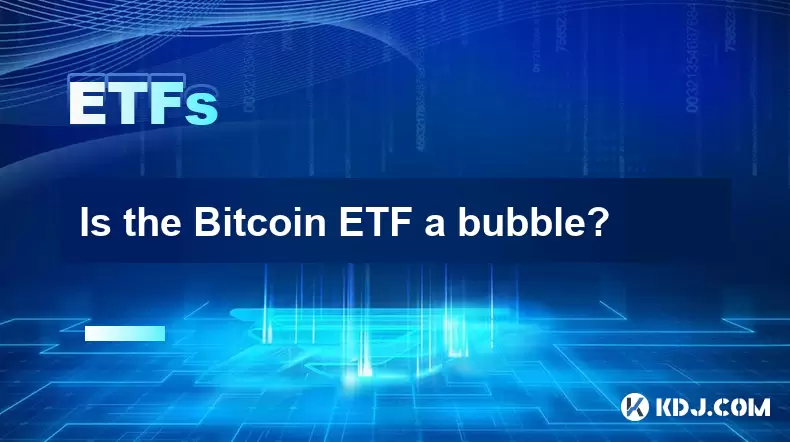
Is the Bitcoin ETF a bubble?
Jul 20,2025 at 06:57am
Understanding the Bitcoin ETF ConceptA Bitcoin Exchange-Traded Fund (ETF) is a financial product that aims to track the price of Bitcoin without requi...
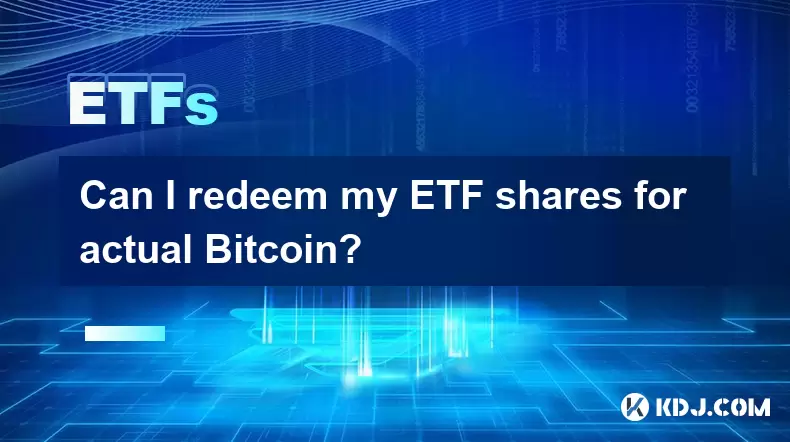
Can I redeem my ETF shares for actual Bitcoin?
Jul 17,2025 at 03:14pm
Understanding ETF Shares and Their Relation to BitcoinExchange-Traded Funds (ETFs) have become a popular investment vehicle for those looking to gain ...
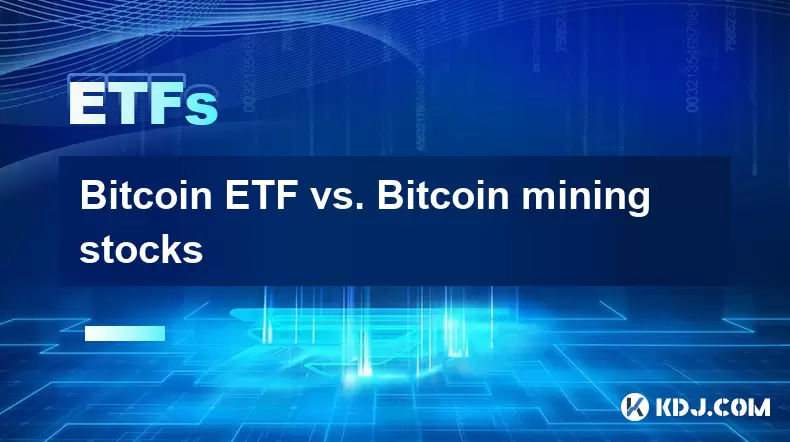
Bitcoin ETF vs. Bitcoin mining stocks
Jul 18,2025 at 04:08pm
What is a Bitcoin ETF?A Bitcoin Exchange-Traded Fund (ETF) is an investment vehicle that tracks the price of Bitcoin and trades on traditional stock e...

What is the best platform to trade Bitcoin ETFs?
Jul 17,2025 at 03:50pm
Understanding Bitcoin ETFs and Their Role in the MarketBitcoin Exchange-Traded Funds (ETFs) are investment vehicles that track the price of Bitcoin wi...

Will a Bitcoin ETF be available in my 401(k)?
Jul 17,2025 at 10:42pm
What is a Bitcoin ETF?A Bitcoin ETF (Exchange-Traded Fund) is an investment vehicle that tracks the price of Bitcoin without requiring investors to di...

Who is the authorized participant for a Bitcoin ETF?
Jul 18,2025 at 12:42am
Understanding the Role of Authorized Participants in Bitcoin ETFsIn the context of Bitcoin Exchange-Traded Funds (ETFs), an authorized participant (AP...

Is the Bitcoin ETF a bubble?
Jul 20,2025 at 06:57am
Understanding the Bitcoin ETF ConceptA Bitcoin Exchange-Traded Fund (ETF) is a financial product that aims to track the price of Bitcoin without requi...

Can I redeem my ETF shares for actual Bitcoin?
Jul 17,2025 at 03:14pm
Understanding ETF Shares and Their Relation to BitcoinExchange-Traded Funds (ETFs) have become a popular investment vehicle for those looking to gain ...

Bitcoin ETF vs. Bitcoin mining stocks
Jul 18,2025 at 04:08pm
What is a Bitcoin ETF?A Bitcoin Exchange-Traded Fund (ETF) is an investment vehicle that tracks the price of Bitcoin and trades on traditional stock e...
See all articles

























































































